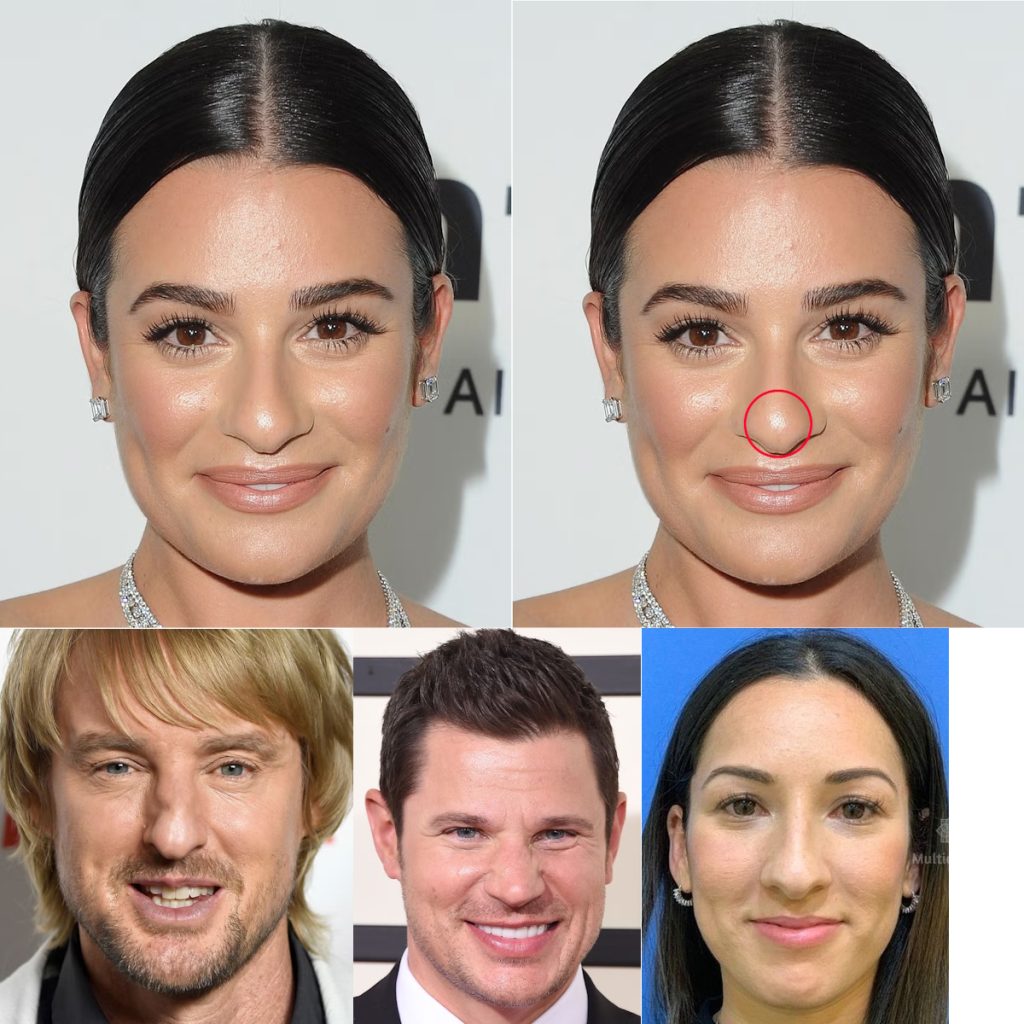You can observe the following nasal features on a frontal face.
Nasal Bridge
Straight: A symmetrical and linear bridge with no curvature.
Wide: Appears broader in proportion to the face; can be evaluated by comparing the bridge’s width to the alar width.
Flat: A low or less pronounced bridge that blends into the face.
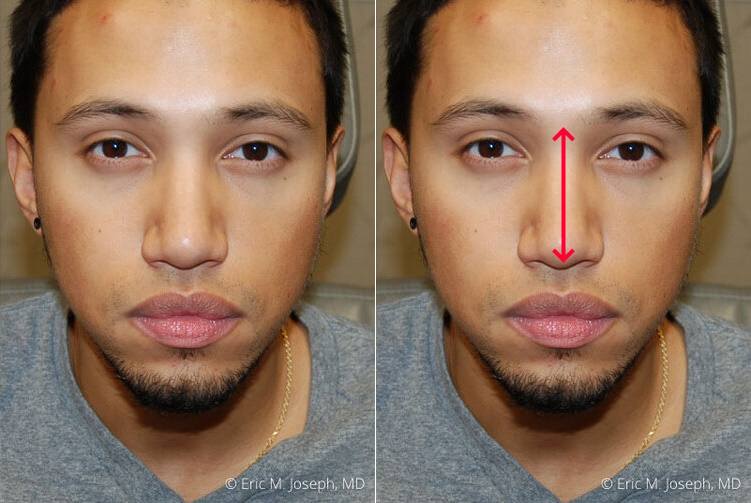

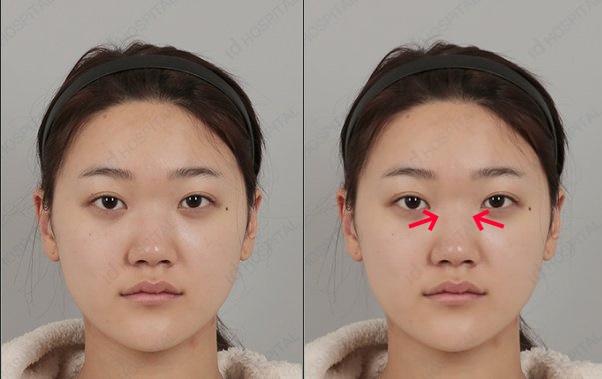
Alar Width (Base of the Nose)
Narrow: The width of the nose’s base is proportionally smaller than the distance between the eyes.
Normal: Proportional width that aligns with general facial features, neither noticeably narrow nor wide; requires context for evaluation.
Flared: The nostril wings extend outward beyond the typical proportions.
Nostrils
Not Visible: The nostrils are hidden due to the angle of the nasal tip or narrowness.
Normal: The nostrils are visible but not exaggerated; symmetry and proportion are key indicators.
Flared: The nostrils appear widened or exaggerated, often accompanied by flared alae.
Nasal Tip
While the nasal tip comes in several sizes and shapes, it can be broadly classified into Pointed, Round, and Bulbous.
Pointed: The tip of the nose appears angular or sharp.
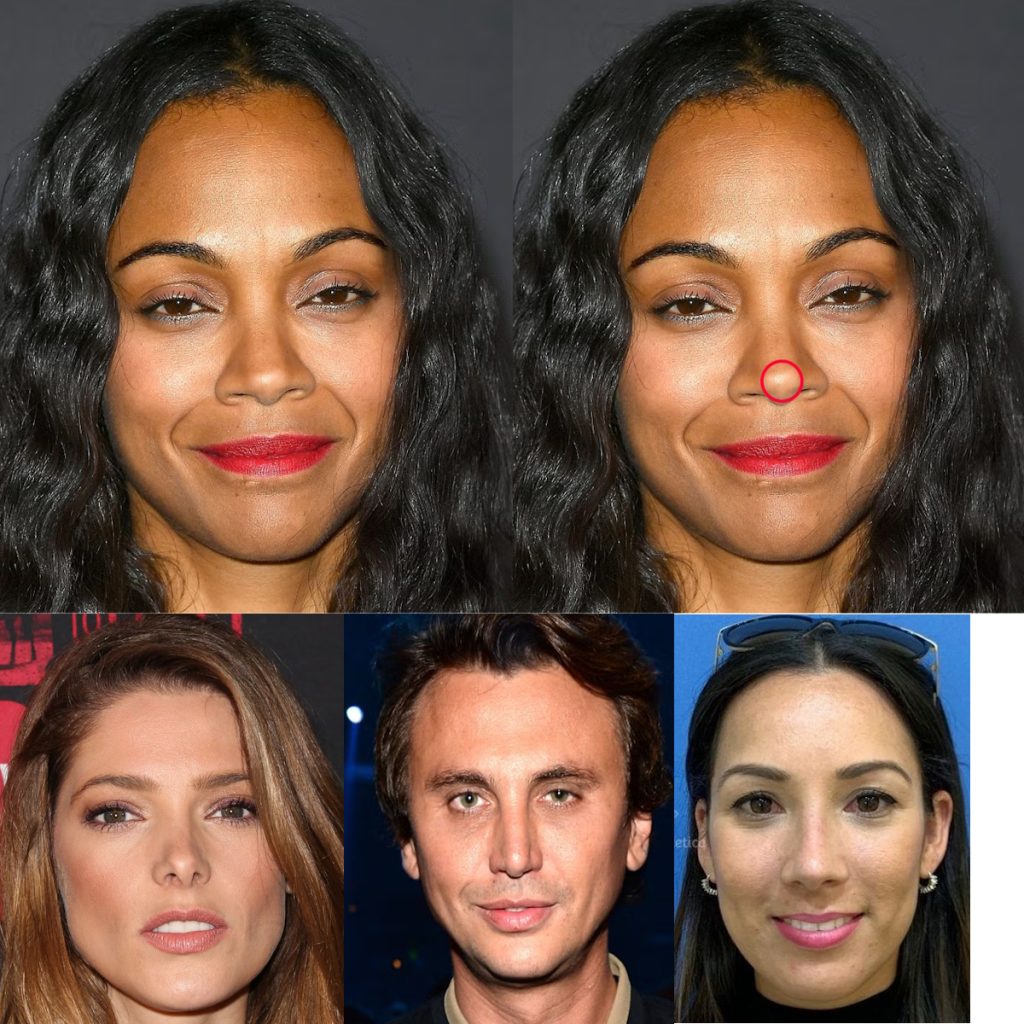
Round: The tip has a soft, circular shape, often blending smoothly into the rest of the nose.
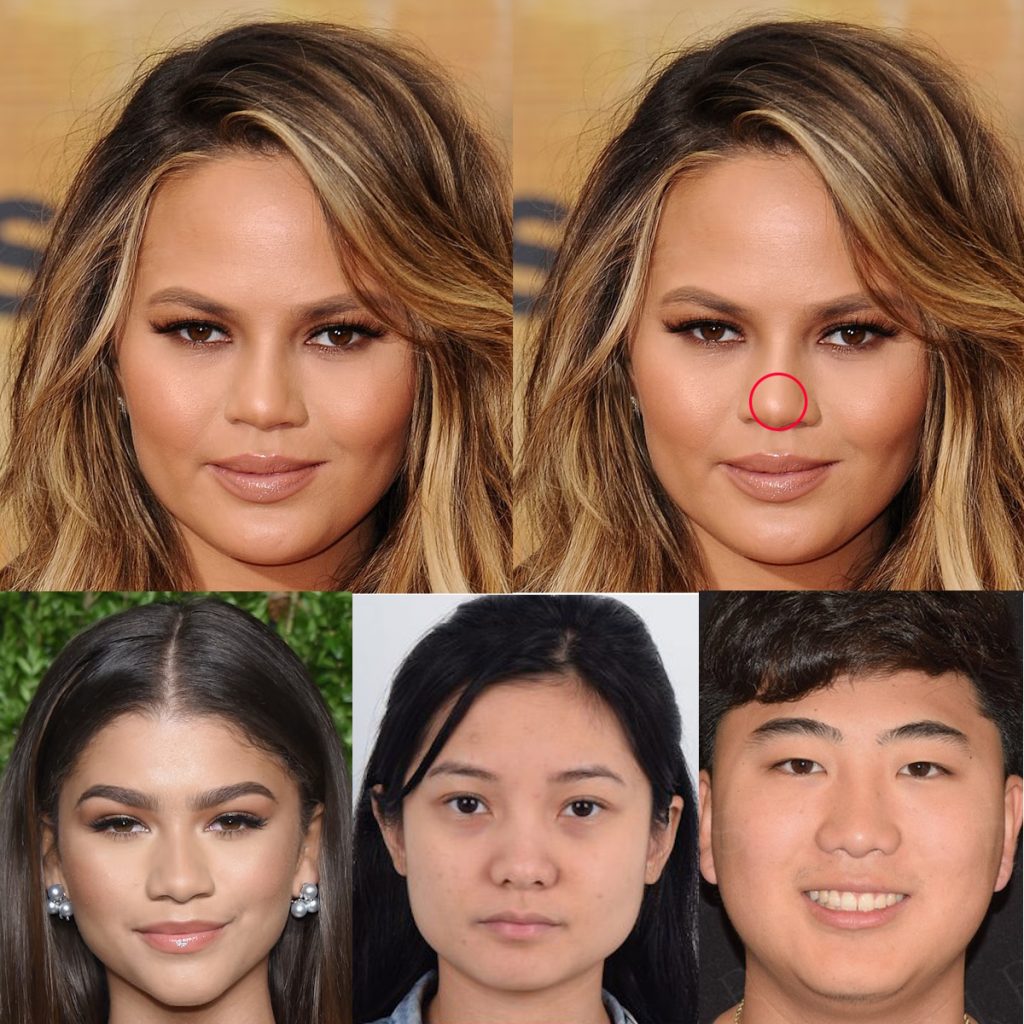
Bulbous: The tip appears enlarged and prominent compared to the rest of the nose.
